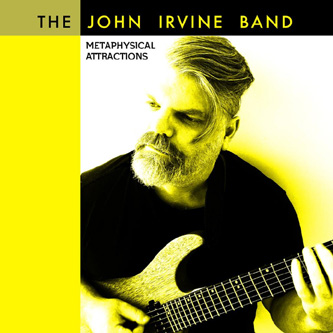 For
the follow up album to his 2015 album Next Stop, Scotland's
great jazz-rock fusion guitar ace John Irvine returned
in early 2019 with his third group masterpiece called Metaphysical
Attractions. Speaking to mwe3.com about the title of
his new album, John explains, "I’m
very interested in the history of religion and how it runs in tandem
with esotericism, and how that relates to the ways in which we currently
view the world. So the album title simply expresses how ‘attractive’
I find all that. Of course, ‘Metaphysical Attractions’ works
in a couple other ways: like in a sideshow attraction… a fortune
teller, perhaps, or invisible forces attracting each other."
For
this release John has assembled an entire new band, including Rich
Kass (drums) with added contributions from Rob Ironside (sax)
and Gwen Kelso (flute). Primarily featuring John and drummer
Rich Kass, the eight cut Metaphysical
Attractions
sizzles with a dynamic, instrumental jazz-rock fusion magic. Rounding
out the album, John also merges his keyboard and bass work into the
mix making the album sound even more complete. Mixed and mastered
by Stuart Hamilton in Pencaitland, Scotland, John Irvine’s
Metaphysical Attractions takes the 21st century guitar-centric,
jazz-fusion sound in some sonically astounding directions. Listeners
lucky enough to have heard John Irvine’s earlier albums, Wait
& See (2011) and Next Stop (2015) will be in for a
pleasant surprise with the 2019 CD release of Metaphysical Attractions.
thejohnirvineband.com
For
the follow up album to his 2015 album Next Stop, Scotland's
great jazz-rock fusion guitar ace John Irvine returned
in early 2019 with his third group masterpiece called Metaphysical
Attractions. Speaking to mwe3.com about the title of
his new album, John explains, "I’m
very interested in the history of religion and how it runs in tandem
with esotericism, and how that relates to the ways in which we currently
view the world. So the album title simply expresses how ‘attractive’
I find all that. Of course, ‘Metaphysical Attractions’ works
in a couple other ways: like in a sideshow attraction… a fortune
teller, perhaps, or invisible forces attracting each other."
For
this release John has assembled an entire new band, including Rich
Kass (drums) with added contributions from Rob Ironside (sax)
and Gwen Kelso (flute). Primarily featuring John and drummer
Rich Kass, the eight cut Metaphysical
Attractions
sizzles with a dynamic, instrumental jazz-rock fusion magic. Rounding
out the album, John also merges his keyboard and bass work into the
mix making the album sound even more complete. Mixed and mastered
by Stuart Hamilton in Pencaitland, Scotland, John Irvine’s
Metaphysical Attractions takes the 21st century guitar-centric,
jazz-fusion sound in some sonically astounding directions. Listeners
lucky enough to have heard John Irvine’s earlier albums, Wait
& See (2011) and Next Stop (2015) will be in for a
pleasant surprise with the 2019 CD release of Metaphysical Attractions.
thejohnirvineband.com
mwe3.com presents an interview with
JOHN IRVINE
The Metaphysical Attractions Interview
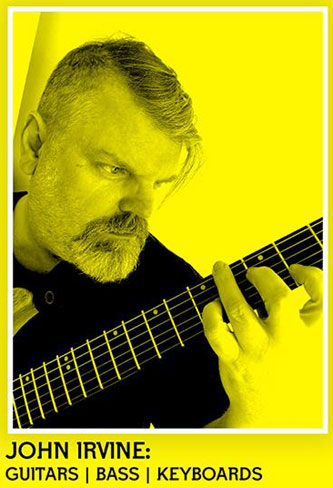 mwe3:
The latest John Irvine Band album is Metaphysical Attractions,
and it came out at the end of 2018. Why did you call the album
Metaphysical Attractions and how does it reflect in the album
sound and compositions? The word metaphysical sometimes refers to
mystical ideas, so would you consider the album to be somewhat transcendent?
mwe3:
The latest John Irvine Band album is Metaphysical Attractions,
and it came out at the end of 2018. Why did you call the album
Metaphysical Attractions and how does it reflect in the album
sound and compositions? The word metaphysical sometimes refers to
mystical ideas, so would you consider the album to be somewhat transcendent?
John Irvine: Trying to finally get it done certainly gave me
some outer body experiences, that’s for sure! But seriously,
yes, my outside music interests are largely invested in learning tarot
and researching esoteric thought. I’m very interested in the
history of religion and how it runs in tandem with esotericism, and
how that relates to the ways in which we currently view the world.
So the album title simply expresses how ‘attractive’ I find
all that. Of course, ‘Metaphysical Attractions’ works in
a couple other ways: like in a sideshow attraction… a fortune
teller, perhaps, or invisible forces attracting each other.
mwe3: You changed the lineup of players for the Metaphysical
Attractions album. What did each player bring to the table for
the making of the album? What was involved with Rich Kass co-producing
the album with you? He certainly keeps a solid beat throughout the
album. Also, which Metaphysical Attractions tracks are Rob
Ironside and Gwen Kelso playing on?
John Irvine: Rich Kass is actually on old student of mine from
when I lectured in music at Napier University here in Edinburgh. He
is a major talent - a trip to his website will confirm this: www.richardkass.com.
I knew that Rich had already made his mark on the Edinburgh jazz scene
and knew of his work with the HLK Trio w/ Evelyn Glennie, so he was
an obvious choice to get on the new record. He is also a terrific
guy and very easy to work with, full of ideas. He was at the mix/master
with me and helped me make some important decisions during that process.
The saxophonist Rob Ironside and flautist Gwen Kelso are both professional
musicians in Edinburgh and hugely talented people. Rob plays on "Metaphysical
Attractions II" and Gwen on "Lucy’s Brainwave".
mwe3: Your earlier album Next Stop featured you playing
a Steinberger GR4 guitar as well as other guitars. You’re playing
a different guitar on the cover of Metaphysical Attractions. Tell
us about that guitar on the cover art of the CD as well as other guitars
you play on Metaphysical Attractions, and also what amps and
effects you employ to get the right sound?
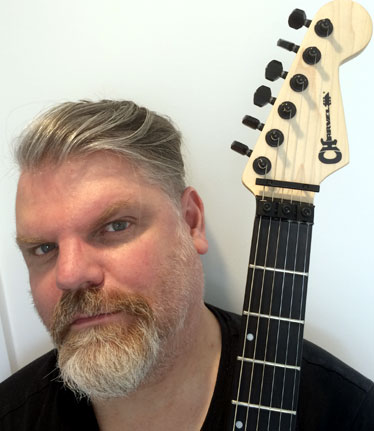 John
Irvine: On the cover of Metaphysical Attractions I’m playing
a Charvel Pro-Mod DK24 in Okoume. Unfortunately, I don’t have
it anymore - I sold it on fairly soon after the photo was taken. I
chop and change guitars a lot. It’s a problem I have for which
there is no available cure! For recording Metaphysical Attractions
I primarily used the Charvel and a Reverend Jetstream (again, sold
it). My current guitar is another Charvel, this time it’s a San
Dimas Type 2 in Trans Black Burst, which is a Tele shape, of course.
I think with this one I may have found THE guitar for me. It’s
an outstanding piece of kit. As far as amps and effects go, I like
to keep it simple. I used a Marshall Origin 20w and my old Yamaha
DG Stomp pre-amp. I also use a Boss PS-6 for my ‘synth’
lead sound. You can hear that on the guitar solos for "Metaphysical
Attractions I", "Hymn To The Winter Sun" and "Me
And My Idiophone".
John
Irvine: On the cover of Metaphysical Attractions I’m playing
a Charvel Pro-Mod DK24 in Okoume. Unfortunately, I don’t have
it anymore - I sold it on fairly soon after the photo was taken. I
chop and change guitars a lot. It’s a problem I have for which
there is no available cure! For recording Metaphysical Attractions
I primarily used the Charvel and a Reverend Jetstream (again, sold
it). My current guitar is another Charvel, this time it’s a San
Dimas Type 2 in Trans Black Burst, which is a Tele shape, of course.
I think with this one I may have found THE guitar for me. It’s
an outstanding piece of kit. As far as amps and effects go, I like
to keep it simple. I used a Marshall Origin 20w and my old Yamaha
DG Stomp pre-amp. I also use a Boss PS-6 for my ‘synth’
lead sound. You can hear that on the guitar solos for "Metaphysical
Attractions I", "Hymn To The Winter Sun" and "Me
And My Idiophone".
mwe3: Last time we spoke you mentioned you would include some
classical guitar on Metaphysical Attractions but I don’t
hear any nylon sounds on the new album. I also know you saw Segovia
play when he was in his 90s. That’s the age not the decade! What
was that concert like and how influenced were you by classical guitar
and do you find that classical guitar is not usually featured in jazz-fusion
music these days? Do you still practice any classical studies or etudes
and what classical guitars do you like best?
John Irvine: Yes, I realized I hadn’t delivered for you
on that front! Although there is steel string on there courtesy of
a PRS Angelus, the Lifeson model, and there is classical guitar on
the new album for 2020. It’s done and in the can. But the Segovia
concert… it was disappointing, actually. But he was well past
it by then – tuning up half way through pieces, lots of mistakes
and the like. He arrived on stage wearing a cape and cane, which were
removed by an assistant, all very theatrical, like James Brown but
without any of the energy. He was never influential on my generation
of players, I would say. Completely different technique to the majority
of the younger guitarists at the time, and most of my classical guitar
influences were formulated already, mainly Julian Bream, David Russell
and of course, my teacher at the RSAMD, Phillip Thorne. They were
the players I admired most. But having studied classical guitar for
about 10 years I stopped playing in 1990 after my post-grad year.
I think I found a number of issues with the instrument overwhelming:
the gestural problems of a quiet instrument, the repertoire being
somewhat limited in quality, the loneliness/anxiety of solo performance,
etc. I also couldn’t see myself playing other people’s music
for the rest of my life. I sold my classical guitar years ago. But
it has had an enormous influence, technically, on my guitar style.
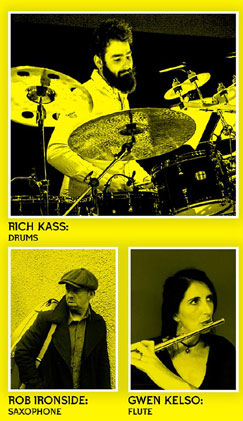 mwe3:
How about the keyboards you play on Metaphysical Attractions and
are you still using the MOTU digital performer for the keyboard parts
on the new album? How much of a challenge is it to overdub keyboards
over the guitar sounds?
mwe3:
How about the keyboards you play on Metaphysical Attractions and
are you still using the MOTU digital performer for the keyboard parts
on the new album? How much of a challenge is it to overdub keyboards
over the guitar sounds?
John Irvine: All keyboards on ‘Metaphysical Attractions’
are produced on the MX4 virtual synth module included in Digital Performer
9. I tend to use the same lead and pad sounds on keys, mainly because
I like them and also to give some continuity. I love it when I hear
Lyle Mays break out his signature ‘ocarina‘ sound on the
Oberheim, so that’s in the back on my mind. Keep things identifiable.
The challenge, of course, is not to obscure the guitar parts by layering
up synth sounds. In the past I tended to not use them very much as
I had once thought of JIB as a vehicle for trio performance at one
stage, but latterly I’m using more and more. It’s difficult
to ignore countermelodies when they come to you, or textural ideas
when they present themselves.
mwe3: You studied with guitarist John Etheridge earlier in
your career. Did you study with John in London and how do you feel
his style influenced your own guitar / compositional style? Interesting
that he’s now keeping the Soft Machine legacy alive.
John Irvine: No, I studied with John Etheridge at Dartington
College of Arts in Devon, which is in the South West of England near
Plymouth. This was in the mid 1980s. Dartington was a tremendous place.
Very left-wing, modernist, intellectual, anti-establishment school
for the arts. Everything had to be really new or really old. No Romanticism.
I say it a lot but it was easily the best academic education I ever
had. Sadly, the college closed several years ago, but that’s
British politics for you. Etheridge was terrific. I only had a few
lessons with him but it doesn’t take a lot to have an impression
on me, and I still think about the things he said back then –
the main one being about improvising in any key while staying in one
fret position on the guitar. He got me to call out chords and he would
solo over each one, all the time remaining in 1st position or wherever
he chose. He was fun to learn with. I met him a few times at gigs
since then, and he would catch my eye and say “Don’t I know
you?”. Great guy and a wonderful musician. Yes, my view of the
Soft Machine reunion is simple: the more we can hear their canon of
music the better. I think some bands that veer towards the more avant
or jazz side are completely within their rights to play live, keep
their legacy going, release records. Purely instrumental music tends
to wear a lot better than stuff with vocals. The ‘aboutness’
of songs can very much tie it down to a past that is now an irrelevance.
And there are definitely some ‘classic progressive’ bands
that I don’t want to see rocking out into their 70s and beyond.
Should I name some? Better not…
 mwe3:
Looking back, we were musing, way back in 2015, about that writer
who compared your music and guitar sound to Alan Holdsworth, the guitarist
who actually died later, in April 2017. It had been a while since
he recorded. Have you had recent insights into Holdsworth, both the
composer / recording artist and the guitar innovator? What do you
think Alan Holdsworth will be remembered most for and why do you think
he didn’t record so much in the years before he died?
mwe3:
Looking back, we were musing, way back in 2015, about that writer
who compared your music and guitar sound to Alan Holdsworth, the guitarist
who actually died later, in April 2017. It had been a while since
he recorded. Have you had recent insights into Holdsworth, both the
composer / recording artist and the guitar innovator? What do you
think Alan Holdsworth will be remembered most for and why do you think
he didn’t record so much in the years before he died?
John Irvine: I saw Holdsworth twice. Once in 1991 in Edinburgh
and once in Glasgow in 2008. The Edinburgh gig was with Gary Husband,
Jimmy Johnson and Steve Hunt. In Glasgow it was his trio with Chad
Wackerman and Ernest Tibbs. Now, this concert was great, I enjoyed
it more than the Edinburgh one, but what struck me the most was that
Holdsworth’s hands shook for the entire gig. He obviously suffered
from dreadful performance anxiety. I was very surprised by this –
how could anyone so proficient in their chosen field could have doubts
about themselves. But having thought about this a lot over the years
I realize that he simply had really high standards for himself; to
the point of it being debilitating, not outwardly but inwardly. This
is confirmed somewhat by a story that came from Jimmy Johnson, that
Holdsworth would overdub a solo, listen back to it, erase it, do another,
erase that… and this would go on and on. I think he was definitely
‘on the spectrum’, as we say in the education biz. Certainly
his idiosyncratic notational system would bear this out, as would
his statement that the notes of each scale seem to ‘flash up’
on the fretboard when improvising. We also have to remember that he
spent much of his time in the 1970s as a sideman, so there’s
a big part of his career was spent not playing his own music.
In fact, he was already 35-36 years old by the time IOU came
out. Amazing really. I think that if he had had the financial/record
company backing at that time there would have been much more music
for us to enjoy. He was definitely an artist that needed patronage.
mwe3: Every track on the 'new album is excellent but “(Into)
The Scrying Glass” is a definite standout track and it’s
also the longest track on Metaphysical Attractions. Tell us
about the title and also some insights into the way you approached
writing it and recording it. I felt there was a kind of Steve Howe
or even Steve Hackett like effect in the sound and the track has a
solid rock energy. Tell us something about the way the guitars and
keyboards were synchronized and how many overdubs are on the track.
 John
Irvine: “(Into) The Scrying Glass” is one of my favorites,
too. The title refers to my interest in divination, mainly the tarot
and I-Ching, but I’m intrigued by reflective surfaces and what
the mind has to offer in times of contemplation with the invisible
forces that can reveal themselves. The track itself represents a trip
into our dark unconscious. As to its composition, well, like most
of my music I had the chord progression first. You hear that sequence
for the first minute or so, just the four chords going round and round.
There’s then a bridge of four new chords before the Csharp pedal
point. Then a repeat with a solo on top. So quite simple really. The
main melody took a while to get right, though. I think the solo is
one my best, very melodic and has that “Metheny meets Lifeson”
feel that I go for all the time. To be clear, though, when I say Metheny
I don’t mean his normal semi-acoustic lead playing, it’s
primarily his Roland synth style that has influenced me. He also tends
to play a lot slower when using the Roland, I like that, more trumpet-like
and expressive. The real Pat. A good example of this
is his solo on “The Red One” from the album “I Can
See Your House From Here” with John Scofield. There you can really
hear where I’m coming from. As far as a Howe or Hackett influence,
well, I would say it’s very minimal, if at all. Though a huge
Yes and Genesis fan, their harmonic discourse is not really there
in my JIB music. But I’m amazed that more people don’t hear
an Alex Lifeson influence in my style. It certainly is very strong
in my view - MUCH more so than Holdsworth, or any one else really.
Rush’s music (up to the “Signals” album) and The Police
are really the main rock bands, in terms of a soundworld, that I want
to allow to inhabit my own stuff. I think they are there in everything
I do. Overdubs? There are surprisingly few in my music. Usually the
maximum amount of tracks per tune is between 10-15 in total, and most
of those are guitar. And everything is synchronized with a click track
on pretty much all my tunes.
John
Irvine: “(Into) The Scrying Glass” is one of my favorites,
too. The title refers to my interest in divination, mainly the tarot
and I-Ching, but I’m intrigued by reflective surfaces and what
the mind has to offer in times of contemplation with the invisible
forces that can reveal themselves. The track itself represents a trip
into our dark unconscious. As to its composition, well, like most
of my music I had the chord progression first. You hear that sequence
for the first minute or so, just the four chords going round and round.
There’s then a bridge of four new chords before the Csharp pedal
point. Then a repeat with a solo on top. So quite simple really. The
main melody took a while to get right, though. I think the solo is
one my best, very melodic and has that “Metheny meets Lifeson”
feel that I go for all the time. To be clear, though, when I say Metheny
I don’t mean his normal semi-acoustic lead playing, it’s
primarily his Roland synth style that has influenced me. He also tends
to play a lot slower when using the Roland, I like that, more trumpet-like
and expressive. The real Pat. A good example of this
is his solo on “The Red One” from the album “I Can
See Your House From Here” with John Scofield. There you can really
hear where I’m coming from. As far as a Howe or Hackett influence,
well, I would say it’s very minimal, if at all. Though a huge
Yes and Genesis fan, their harmonic discourse is not really there
in my JIB music. But I’m amazed that more people don’t hear
an Alex Lifeson influence in my style. It certainly is very strong
in my view - MUCH more so than Holdsworth, or any one else really.
Rush’s music (up to the “Signals” album) and The Police
are really the main rock bands, in terms of a soundworld, that I want
to allow to inhabit my own stuff. I think they are there in everything
I do. Overdubs? There are surprisingly few in my music. Usually the
maximum amount of tracks per tune is between 10-15 in total, and most
of those are guitar. And everything is synchronized with a click track
on pretty much all my tunes.
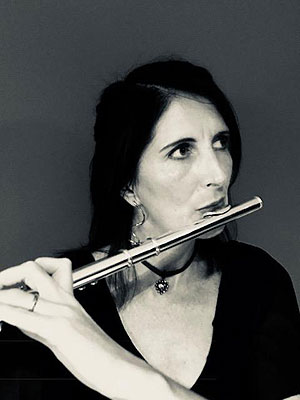 mwe3:
What’s been the reaction to Metaphysical Attractions in
the press? It seems like the internet is the best way to find out
about music these days. Seems and feels like the internet is the only
dependable way to get any first hand information these days. Television
and print newspapers seem so antiquated these days, maybe they’ll
completely disappear by mid-century. How do you feel about the model
for online music in 2019? I hope it improves and we can figure out
a way to market music better on the internet. What kind of futuristic
things are you predicting this century and is there any way to know?
mwe3:
What’s been the reaction to Metaphysical Attractions in
the press? It seems like the internet is the best way to find out
about music these days. Seems and feels like the internet is the only
dependable way to get any first hand information these days. Television
and print newspapers seem so antiquated these days, maybe they’ll
completely disappear by mid-century. How do you feel about the model
for online music in 2019? I hope it improves and we can figure out
a way to market music better on the internet. What kind of futuristic
things are you predicting this century and is there any way to know?
John Irvine: I’m lucky that my reviews have been very,
very positive so far. And I’ve had a lot of support from various
people on the indie prog radio scene eg. Stephen Speelman at Friday
Night Progressive, Gregory Kampf at La Villa Strangiato, Matt Sweitzer
at Canvas Prog Hour – these guys are so generous with their time
and friendship, it makes it all worthwhile. As far as the online model
for music goes… I must say that I’m all in favor of sites
like Bandcamp. They give you a good return. I know for a fact that
all of my music is available on some of the Russian sites, but I’m
delighted that people still buy from the artist. I sell most of my
music from there and most of it is digital downloads, not CD. This
situation has raised an issue for a lot of indie musicians as to whether
it’s worthwhile printing up CDs anymore. I think limited runs
are fine for review purposes and for the odd diehard CD fan, but really
I think digital will take over soon... if it hasn’t already.
I went completely digital a few years ago and use Swinsian as my desktop
player on my iMac. It gives me enormous satisfaction knowing that
all my music is there at a click of a mouse and all saved to an external
disk in aiff. Needless to say, I don’t do streaming. Again, this
brings up something else, the question of ‘soundfile quality’.
I have always thought that the quality of files, whether mp3 or CD
quality FLAC, Hi-Res etc, is directly linked to the consumer’s
access to storage space. I don’t think it is anything to do with
an individual’s preference. If our phones could handle 1GB of
space, people would have FLAC on there. It is undeniable that for
the past 20 years music data has been impossible to store for the
average punter. That’s very slowly changing. I also think that
the worldwide adoption of a ‘lifestyle’ fed to us by a certain
Swedish furniture retailer has led to people not wanting walls of
CDs in their homes. I know I’m guilty of that. This ‘ownership
of the music object’ applies largely to us, the over 50s. The
album is simply one tiny aspect of what music is about these days.
You see, LPs were our scrying glasses back in the 1970s; the reflective
surface that held so much power for us; it was the main connection
with the ideas of our heroes - but nowadays our computers are what
we gaze into, and we can seemingly access so much more from this viewpoint.
Now, all this info can be very helpful, of course, but we need to
remember it still isn’t as good as our imaginations. I think
we can compensate for the lack of album art, gatefold sleeves etc
by applying principles of deep listening, and by creating the best
audio setup that you can afford.
 mwe3:
You were mentioning another album you were working on for release
in 2020? You choose to not do live shows so, so are there any insights
into upcoming ventures, music / literary projects, writing and even
possible performance videos coming as we march to 2020?
mwe3:
You were mentioning another album you were working on for release
in 2020? You choose to not do live shows so, so are there any insights
into upcoming ventures, music / literary projects, writing and even
possible performance videos coming as we march to 2020?
John Irvine: Yes, the fourth JIB album is almost completed,
in terms of demos. I have been working on material over the past few
months and it has come together quite quickly. Funnily enough, I played
the whole thing through to my son last night and he thought it was
the best thing I’d ever done. Which was very kind of him. I think
the next album has more detail in it than anything I have done on
the three ‘primary colour’ albums. The material has kind
of demanded it. It’s also heavier in a lot of places but at the
same time more sophisticated and complex. I’m very pleased with
what has come out so far. At some point, I see myself doing some YouTube
playing related videos. Running down the more fingerstyle-oriented
JIB pieces. I think people would be quite interested to hear that.



